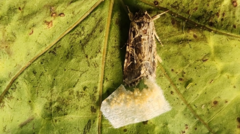In a groundbreaking study, scientists at Tel Aviv University have revealed that animals may respond to sounds emitted by plants, suggesting a hidden communication network that exists between the two. The research indicates that female moths actively avoid laying their eggs on tomato plants that produce distress signals, marking the first evidence of such responsiveness in the animal kingdom.
This team previously established two years ago that plants emit sounds when under stress or unhealthy, though these noises fall outside the human hearing range. However, insects, bats, and some mammals are capable of detecting them. Professor Yossi Yovel, part of the research team, stated, "This is the first demonstration ever of an animal responding to sounds produced by a plant," implying a possible evolutionary relationship where various species may base behaviors like pollination or foraging on auditory cues sent by plants.
The researchers undertook a series of meticulously controlled experiments to ensure that the moths' behavior was indeed a reaction to sound rather than the physical appearance of the plants. Future research will explore the specific sounds produced by different plants and whether other species may respond similarly, potentially enhancing their interactions with flora.
Furthermore, the team is examining the possibility that plants themselves could alert one another through these sound signals, allowing them to adapt to environmental changes, such as reducing water consumption during droughts. Professor Lilach Hadany also of Tel Aviv University, noted, "This is an exciting question,” emphasizing the potential for plants to communicate vital information to their peers.
While the findings indicate that plants produce sounds as a result of physical changes related to stress and are not sentient, the implications are profound. It suggests that plants and animals may have co-evolved to create an intricate system where both parties benefit from mutual acoustic communication. Professor Hadany theorizes that if these sounds prove advantageous to plants, it could lead to further evolution in both plant sound production and animal auditory perception.
The study highlights the complexity of interactions in nature, revealing an expansive, largely untapped realm of research waiting to unfold. Findings from this research have been published in the journal eLife, marking a significant advance in our understanding of plant and animal relationships.






















